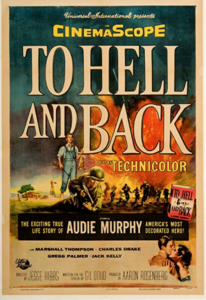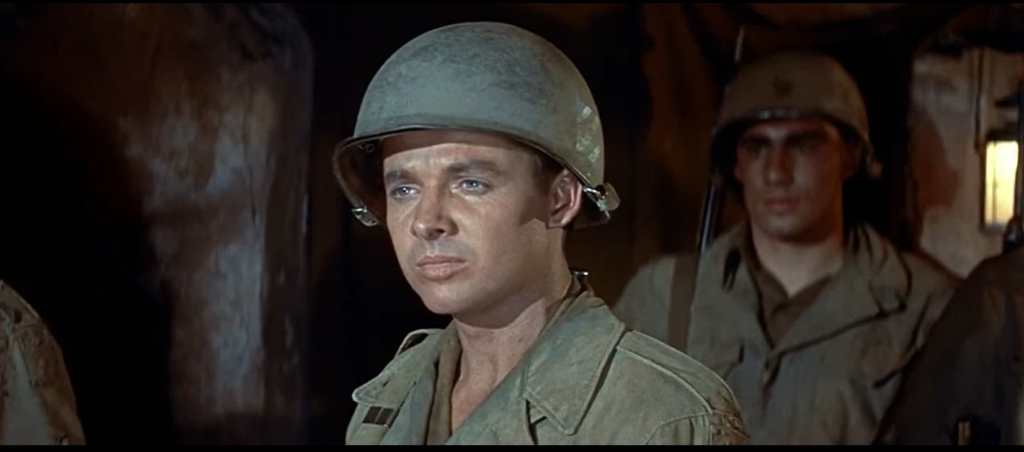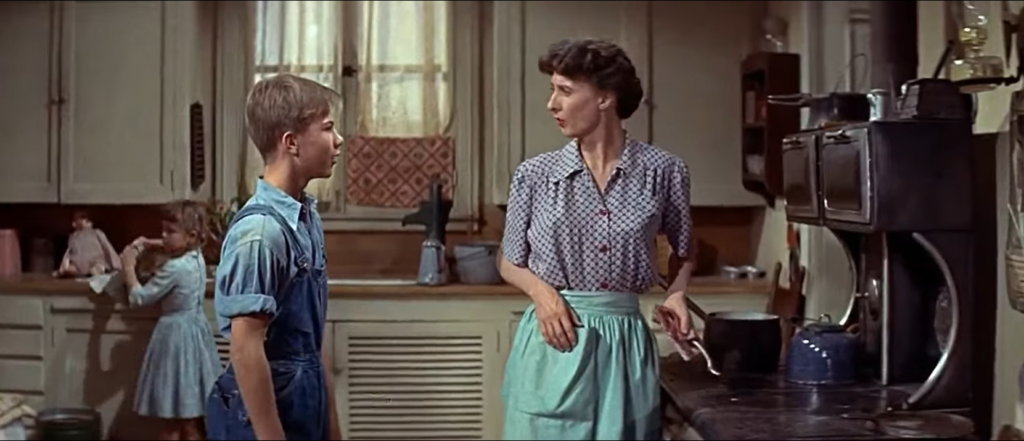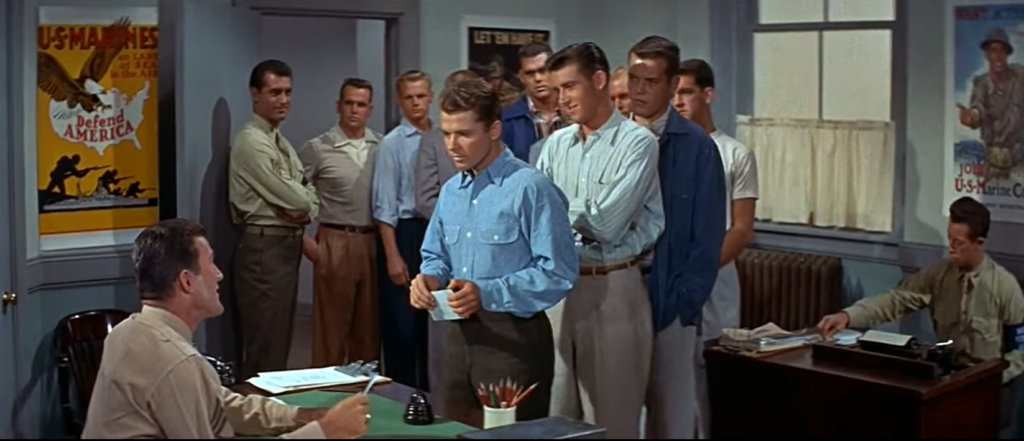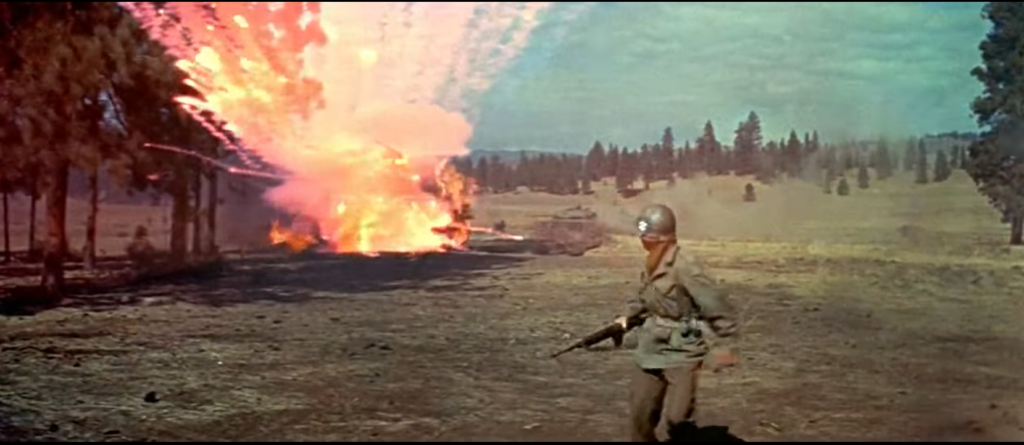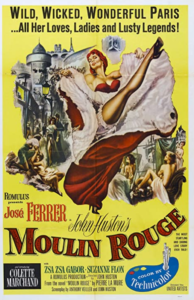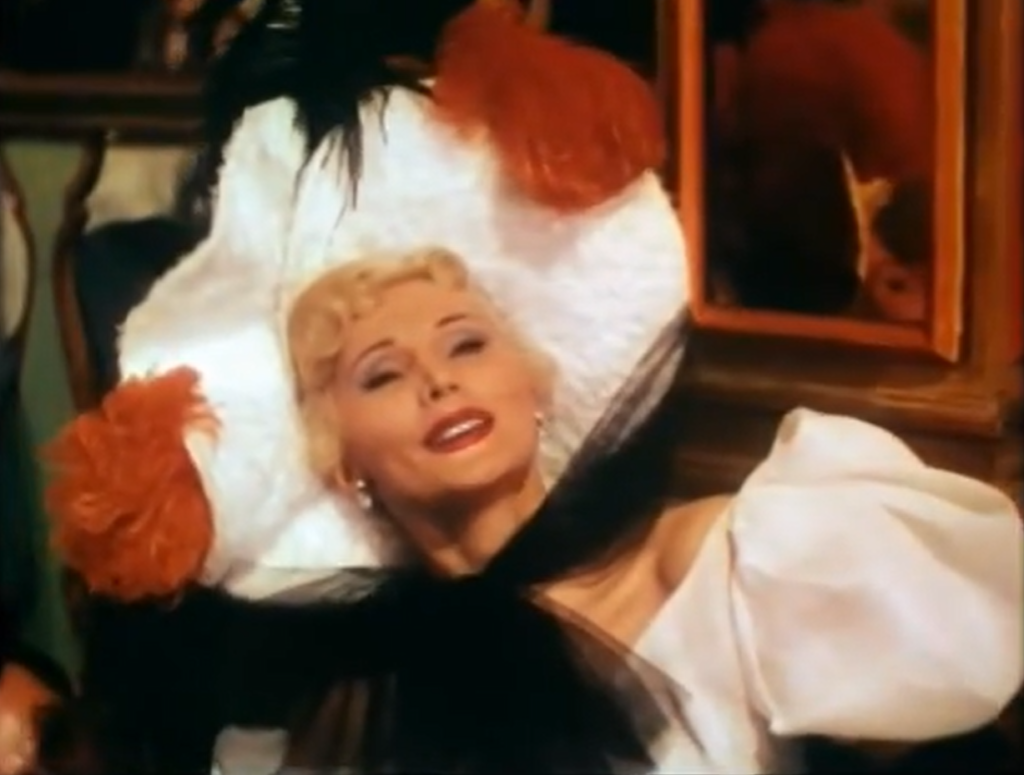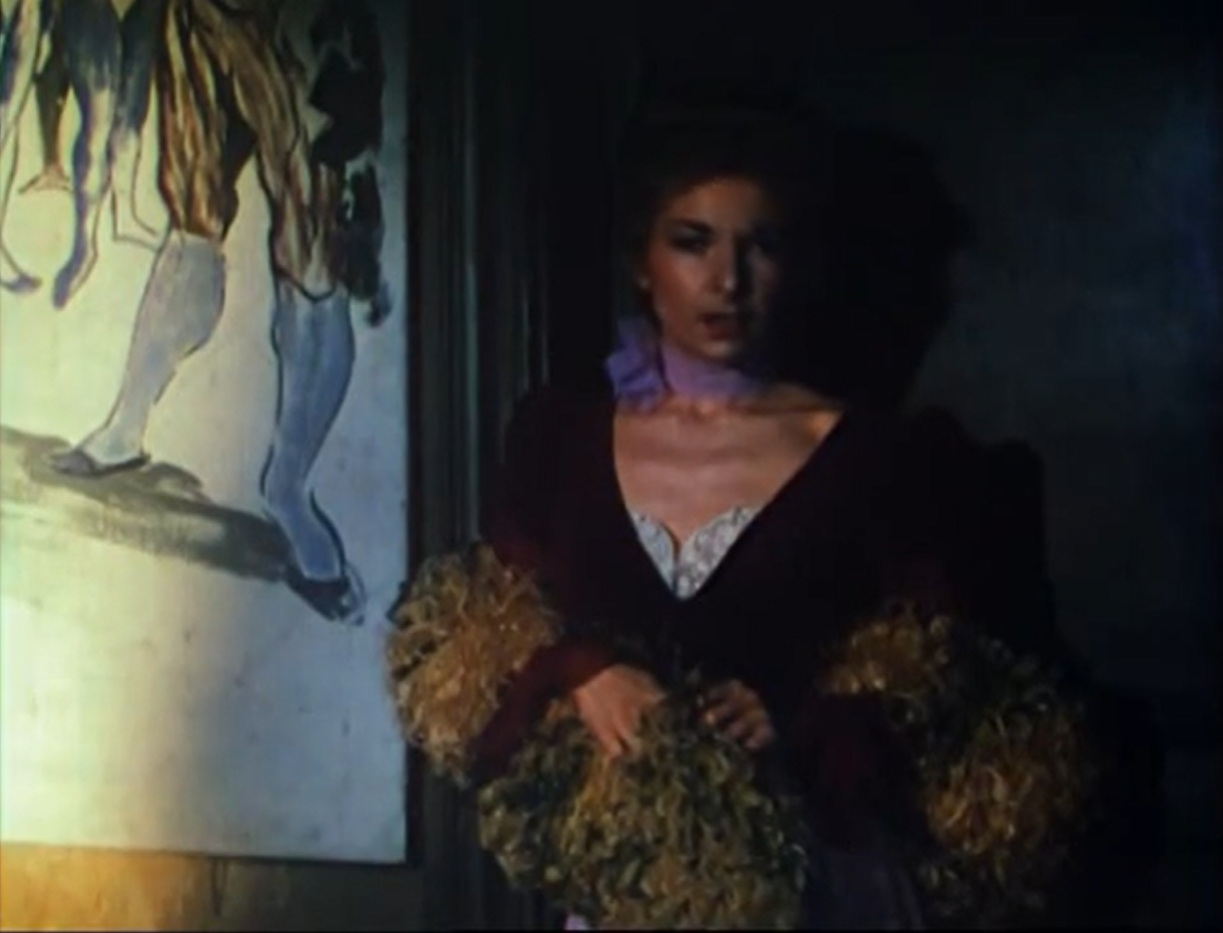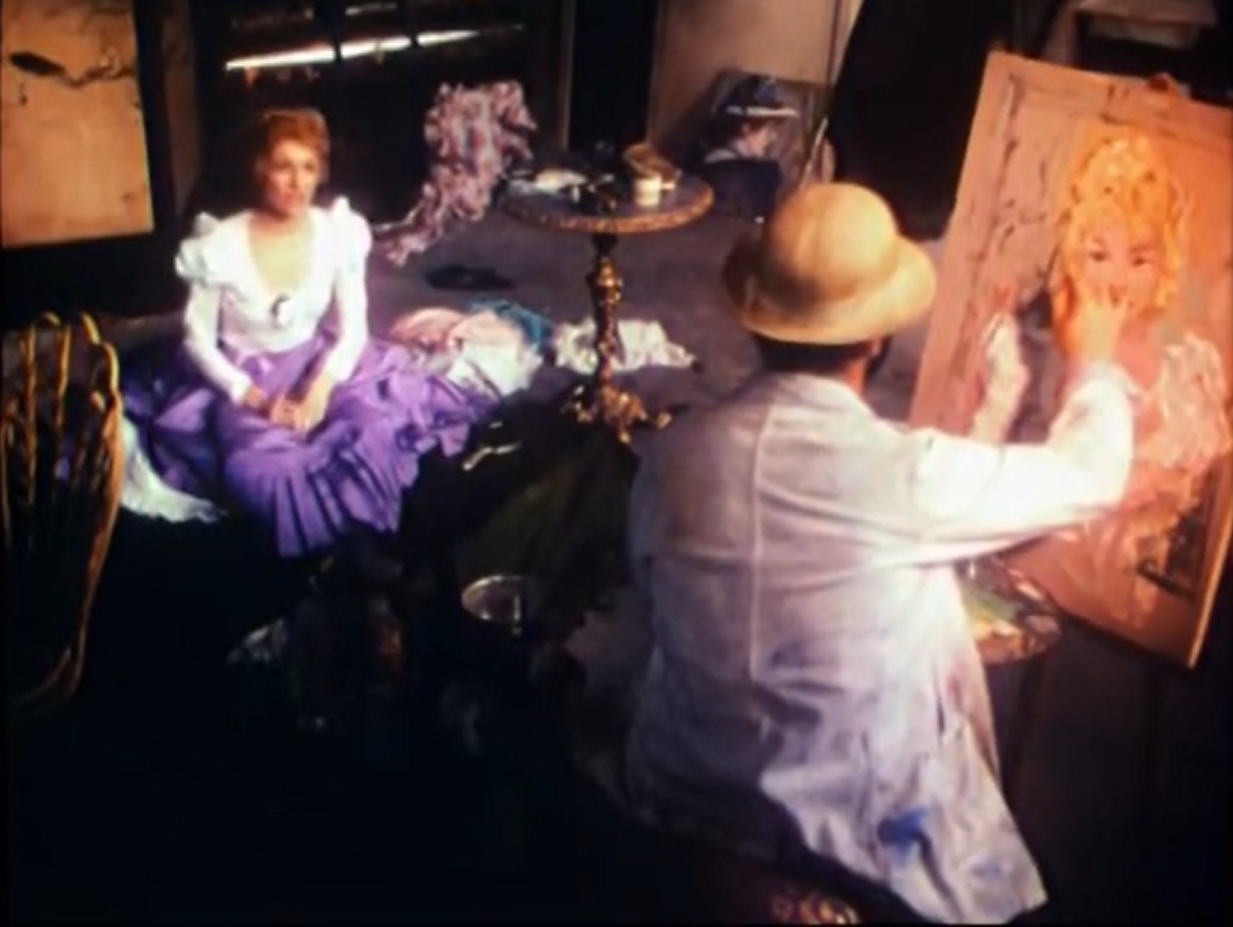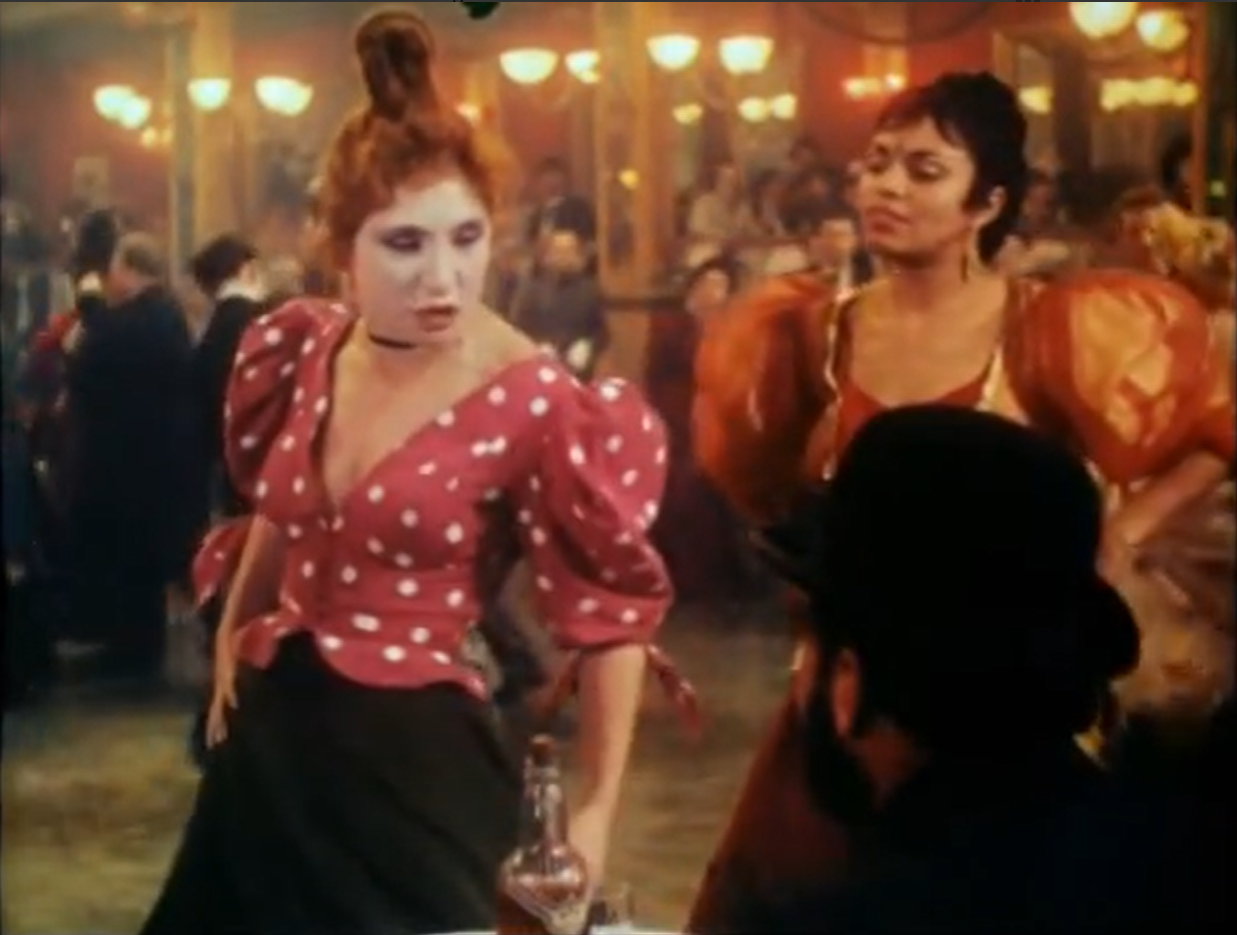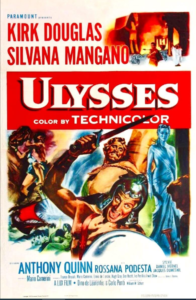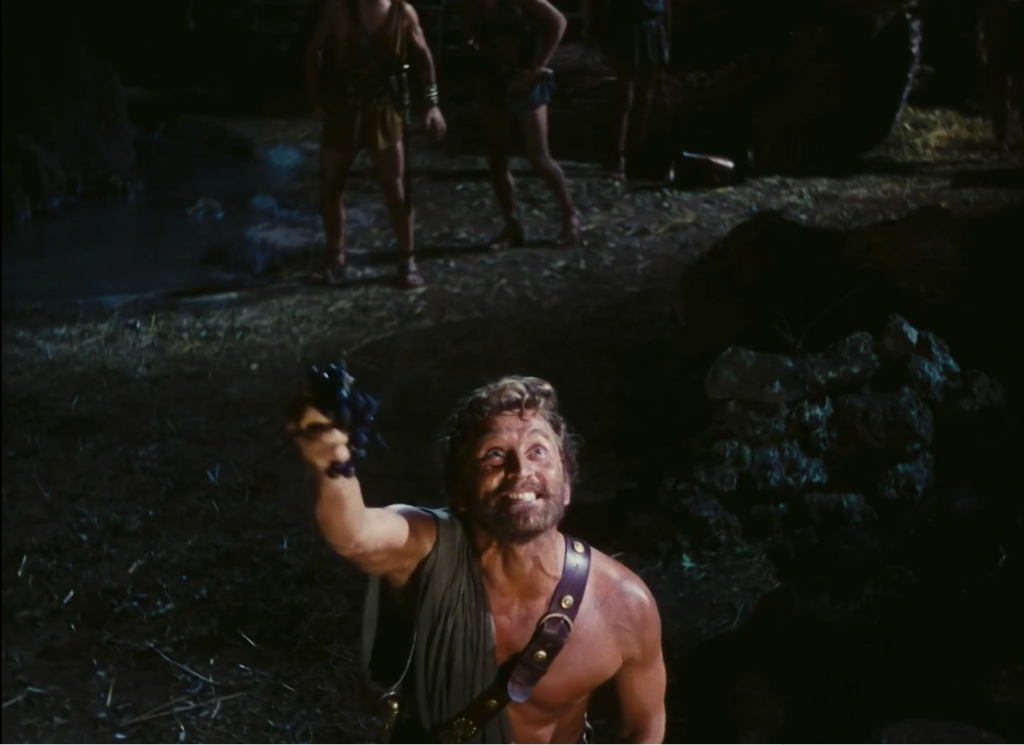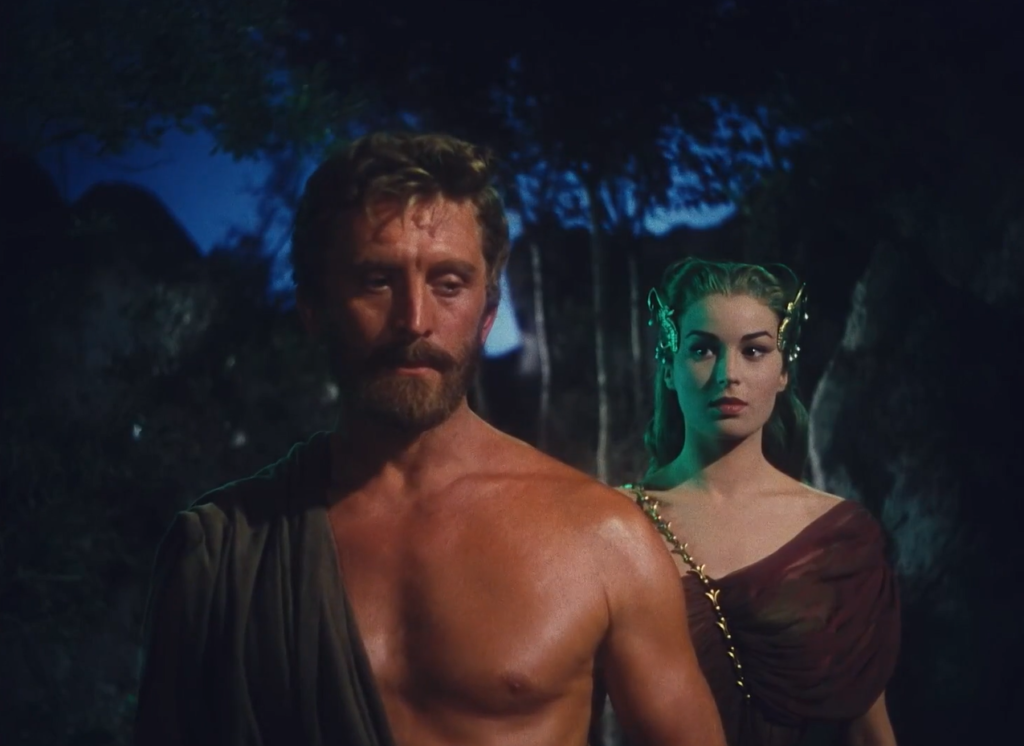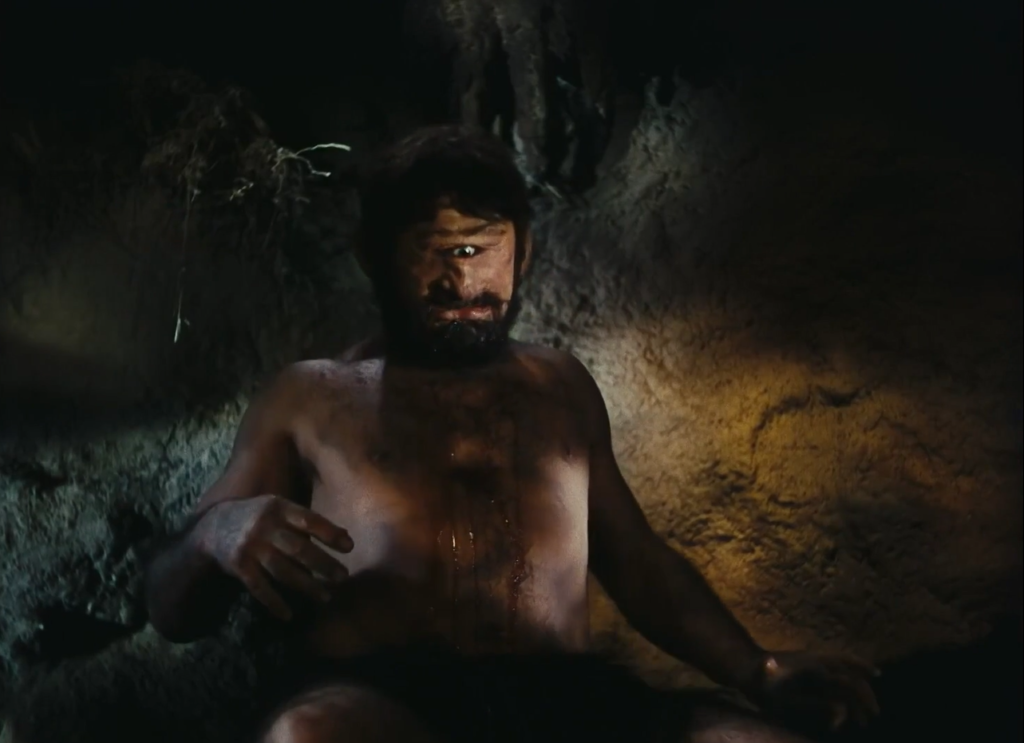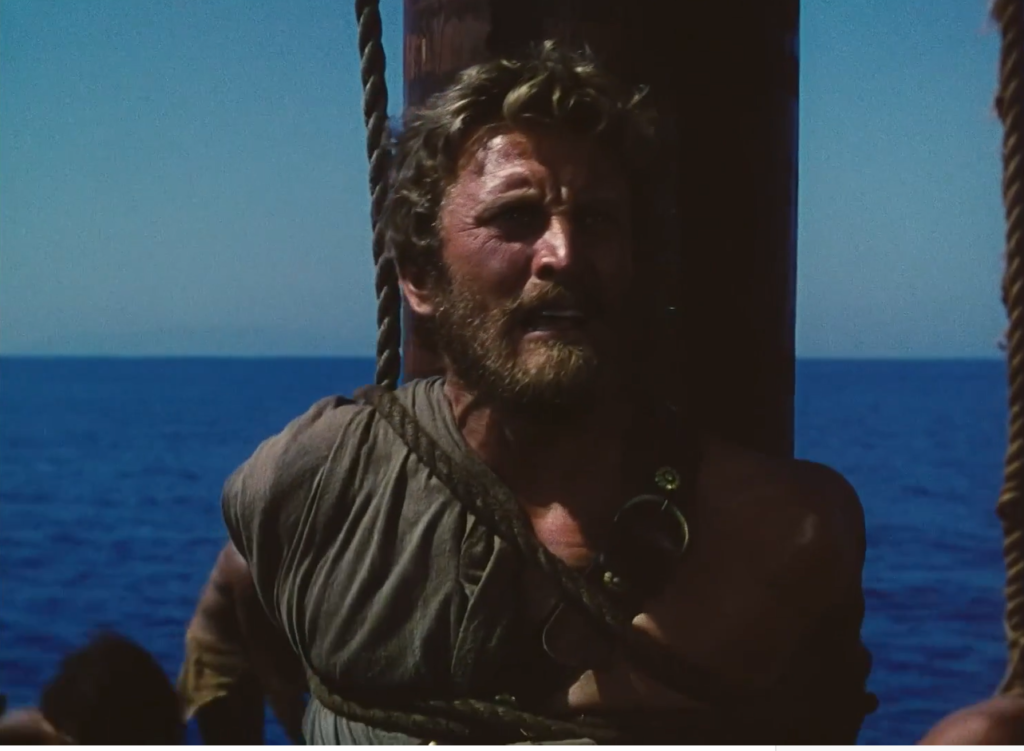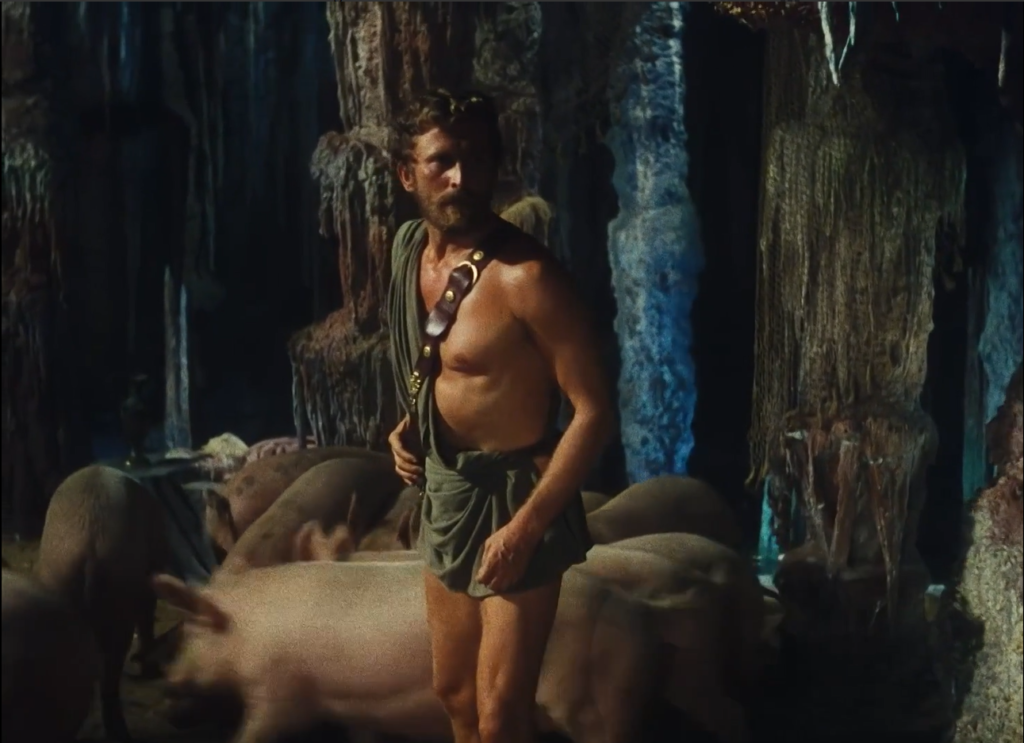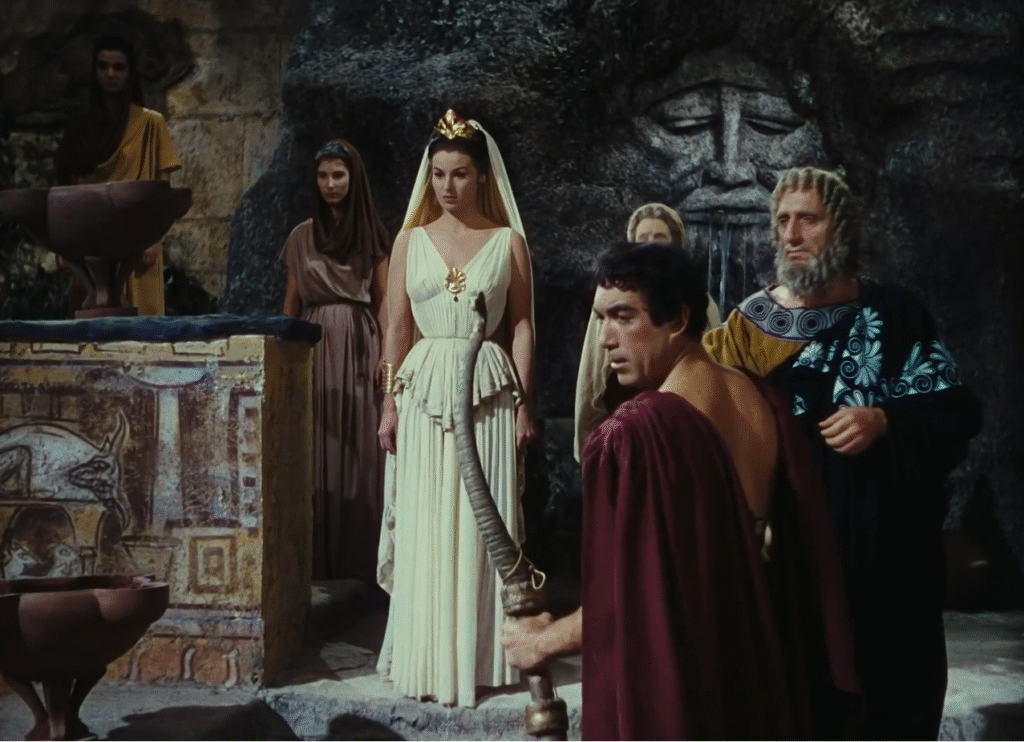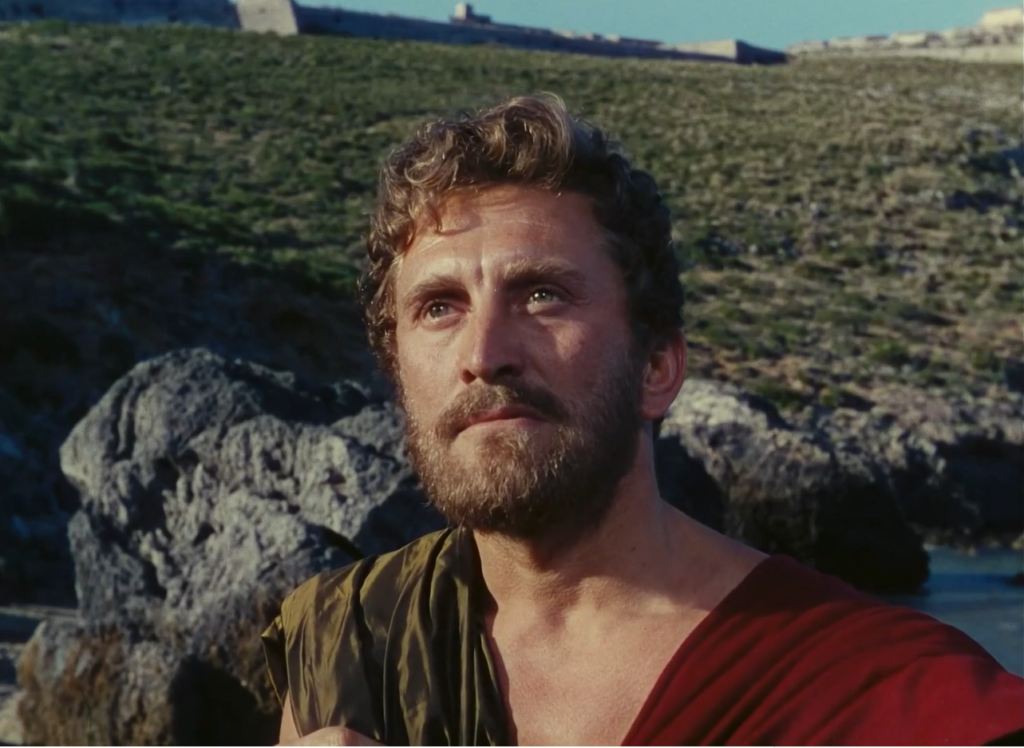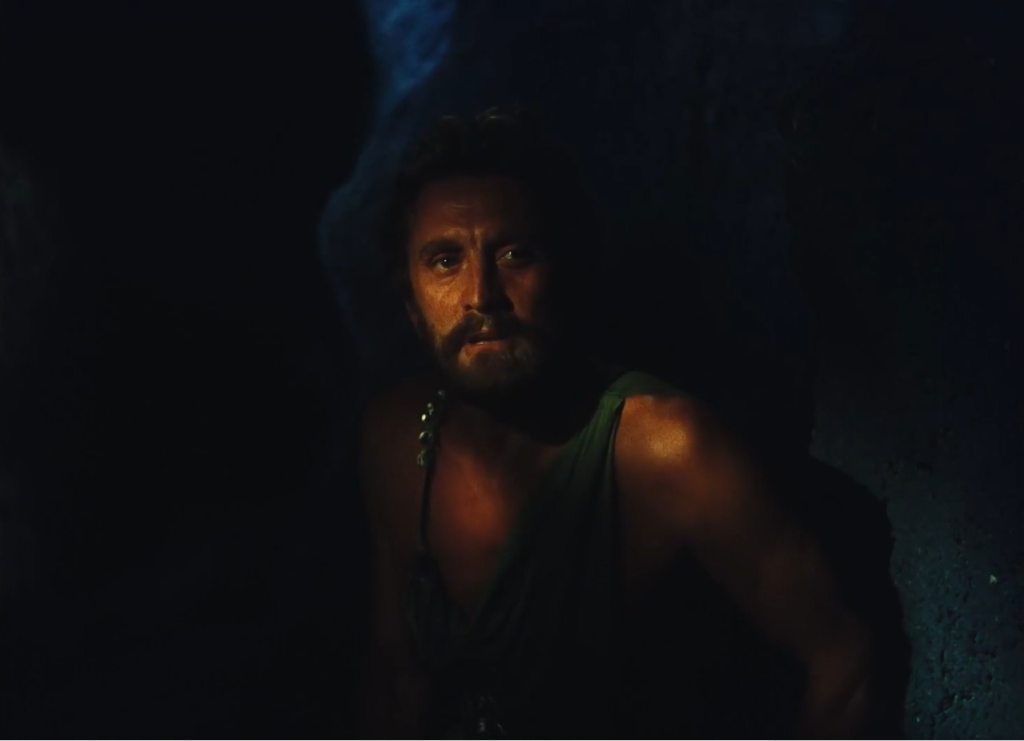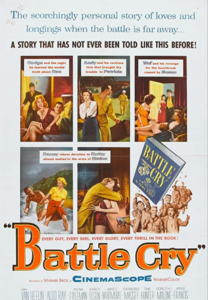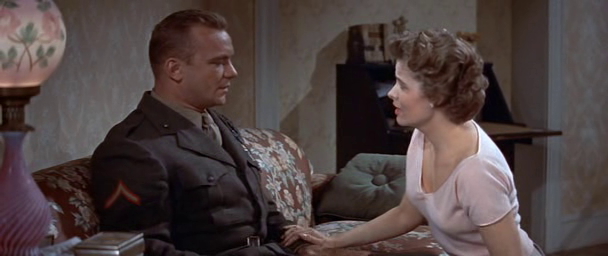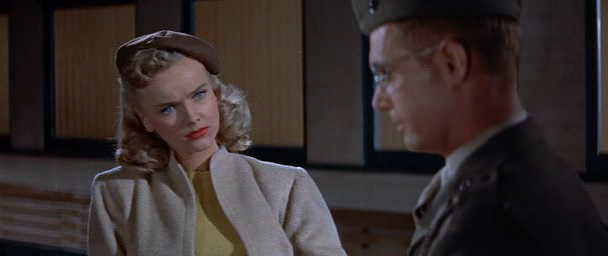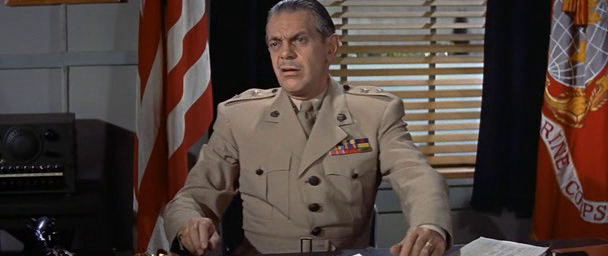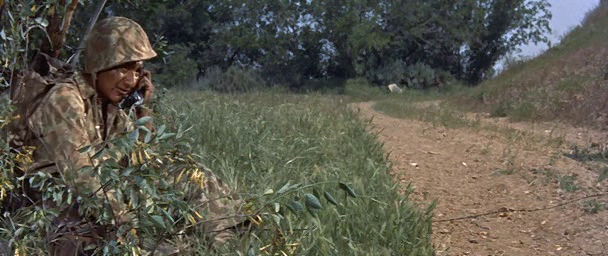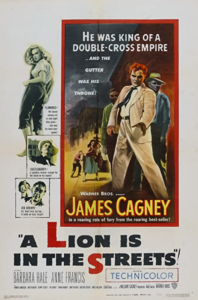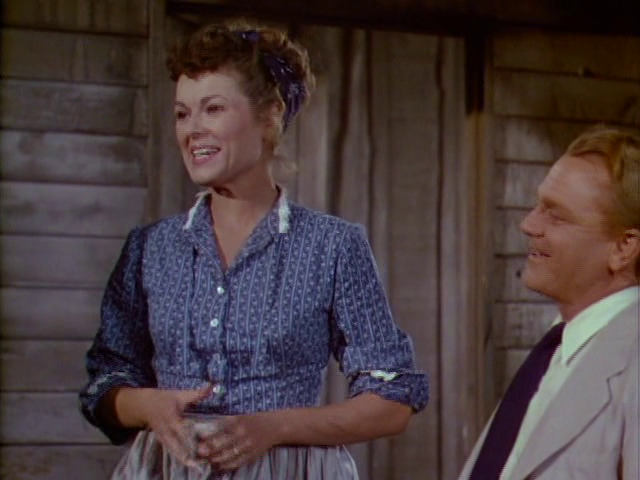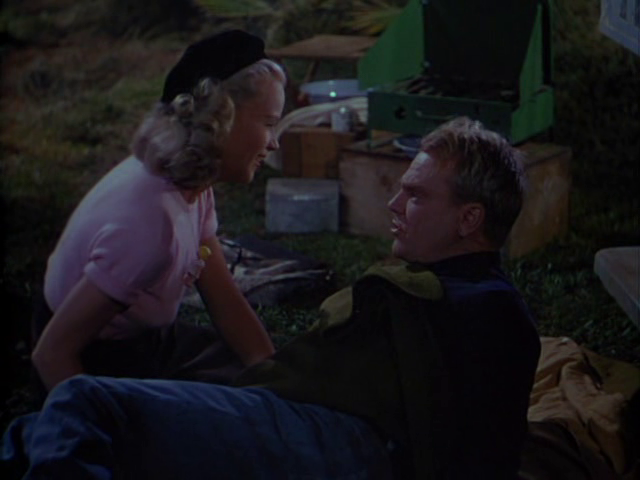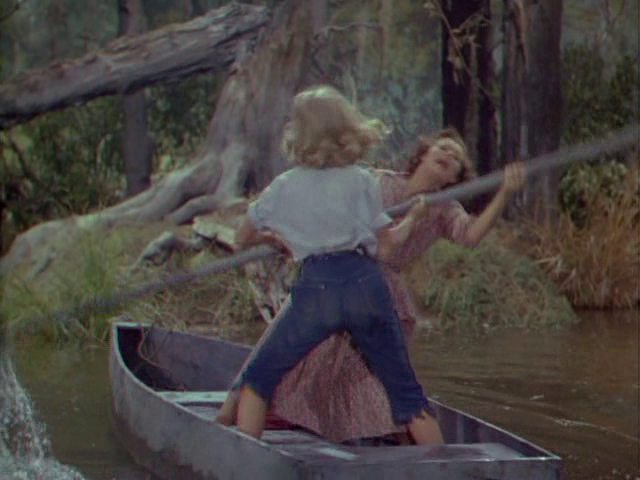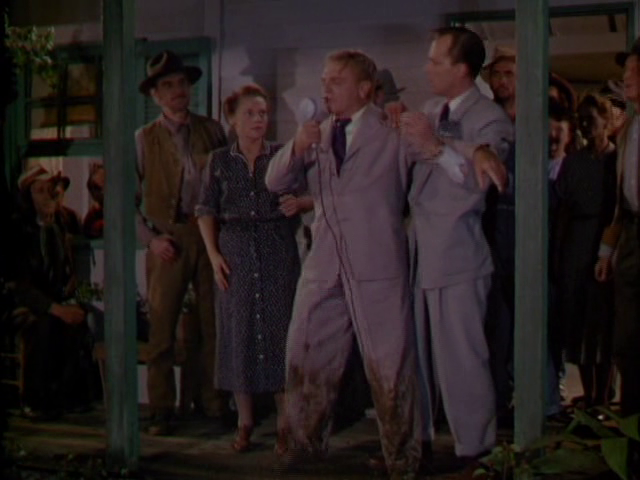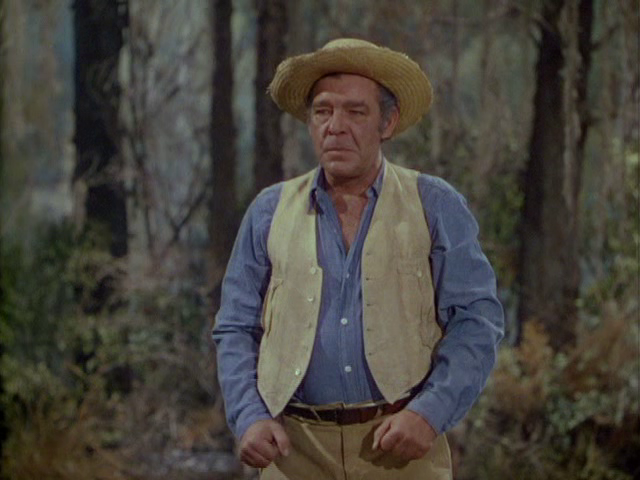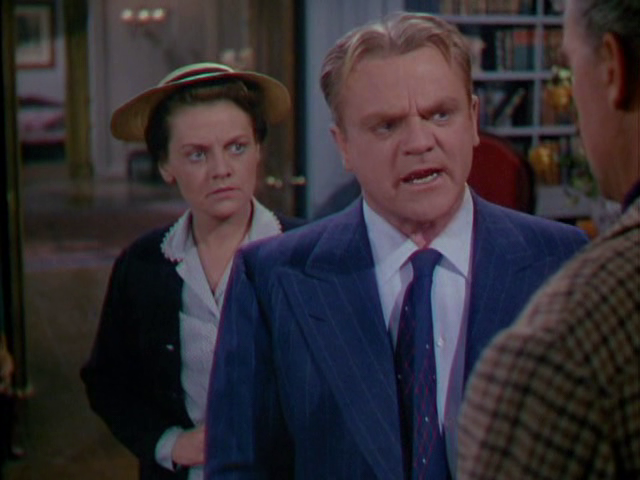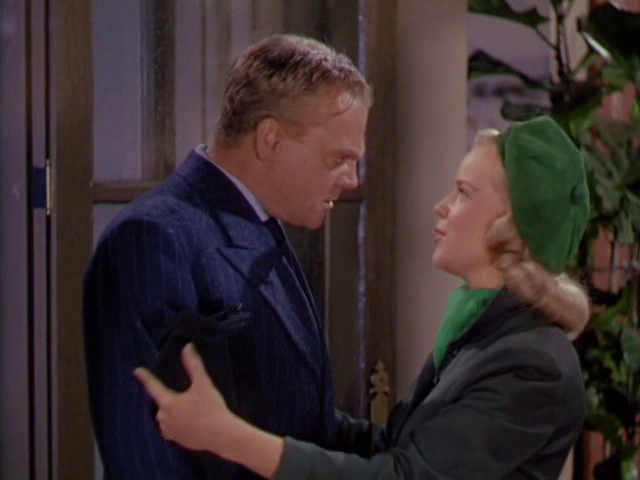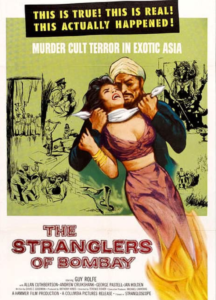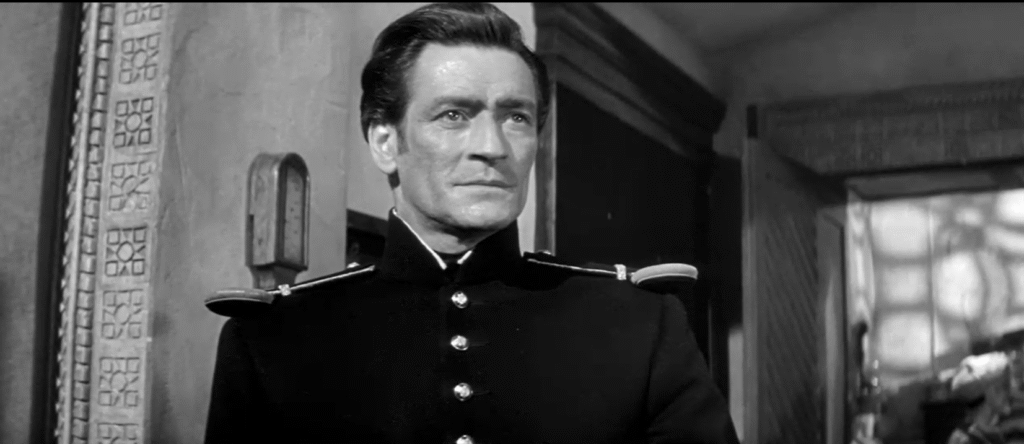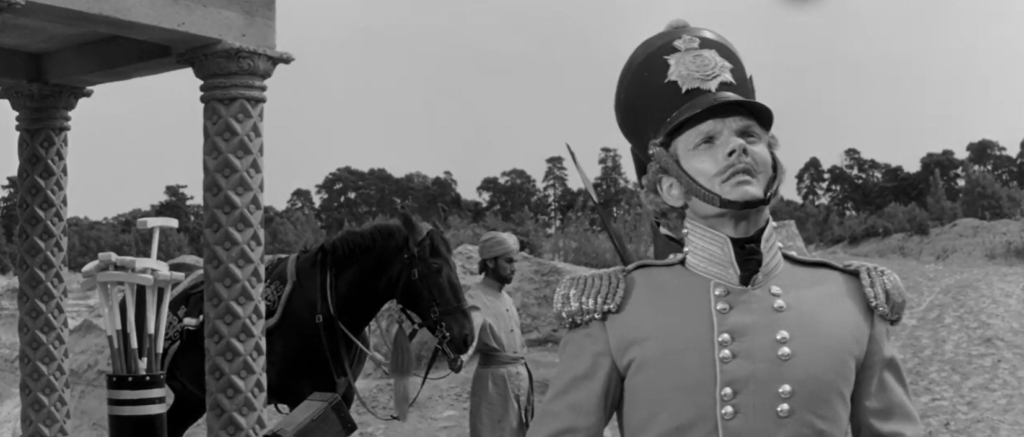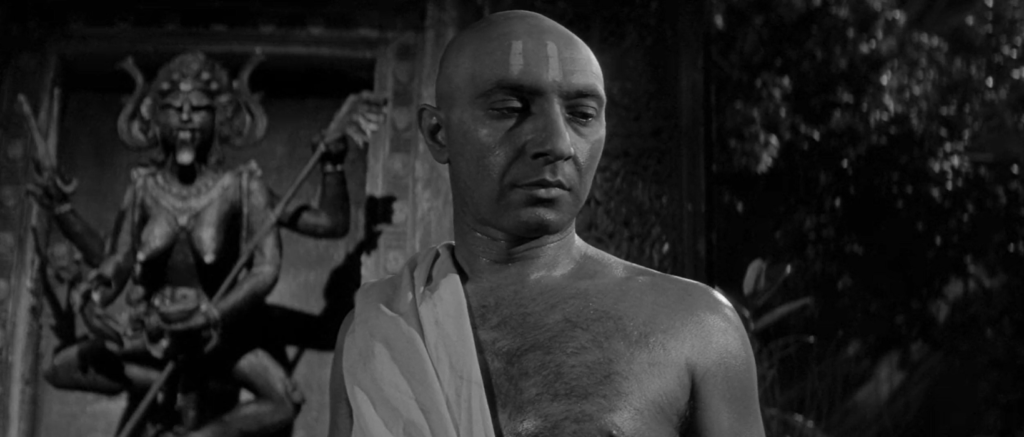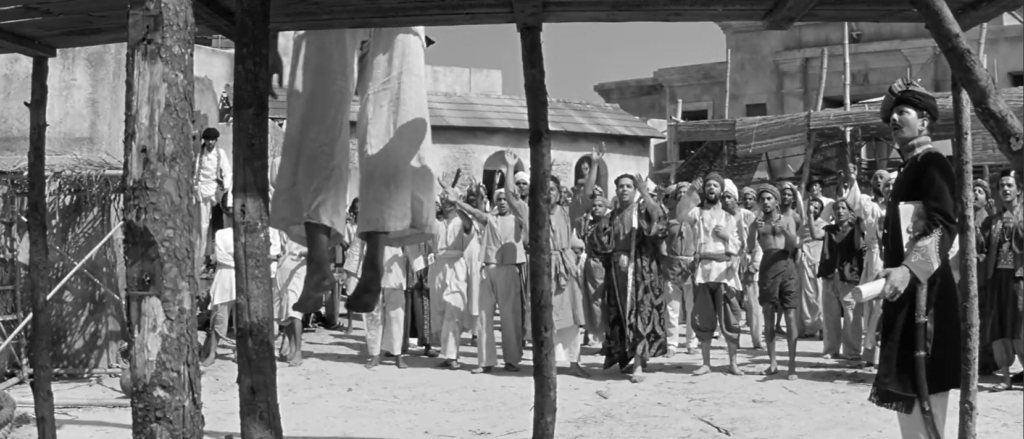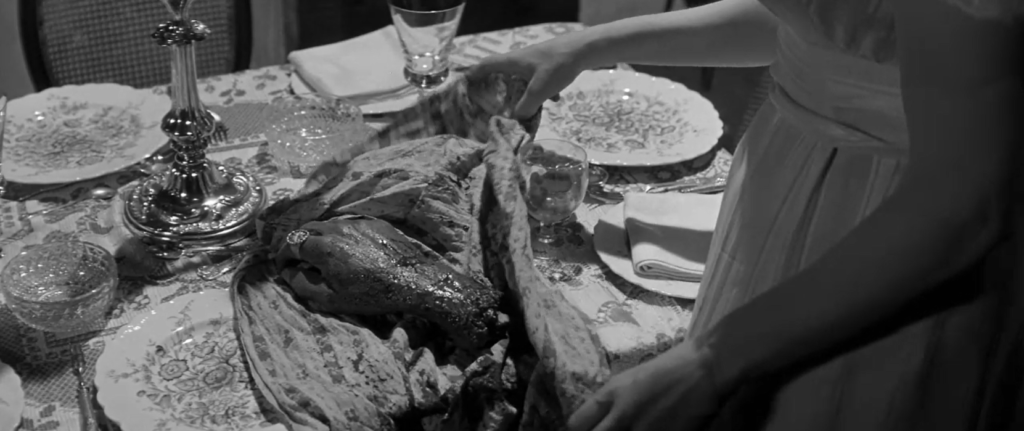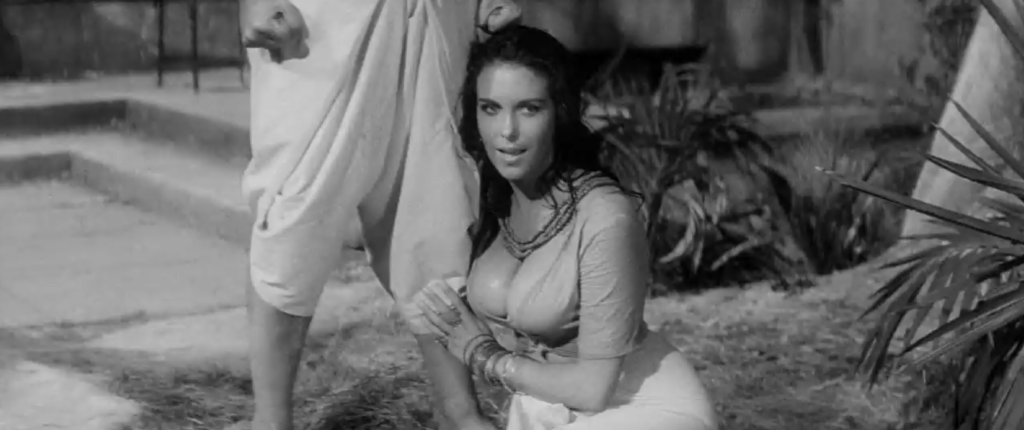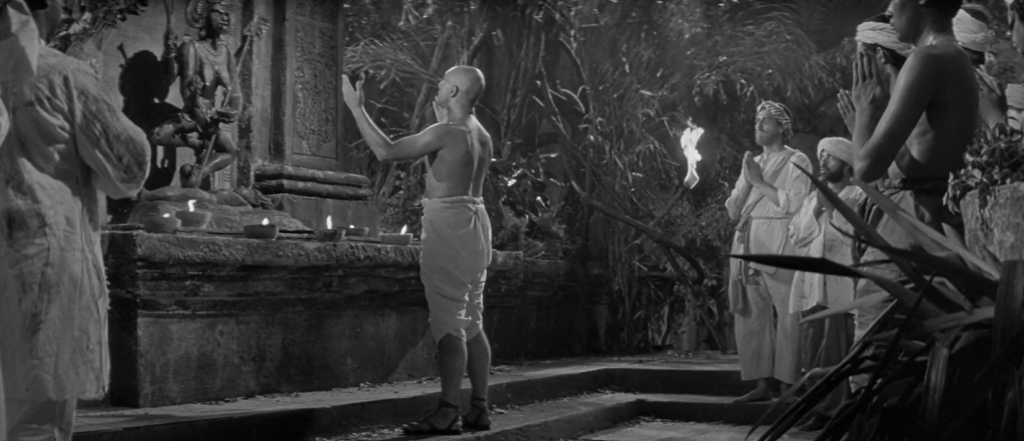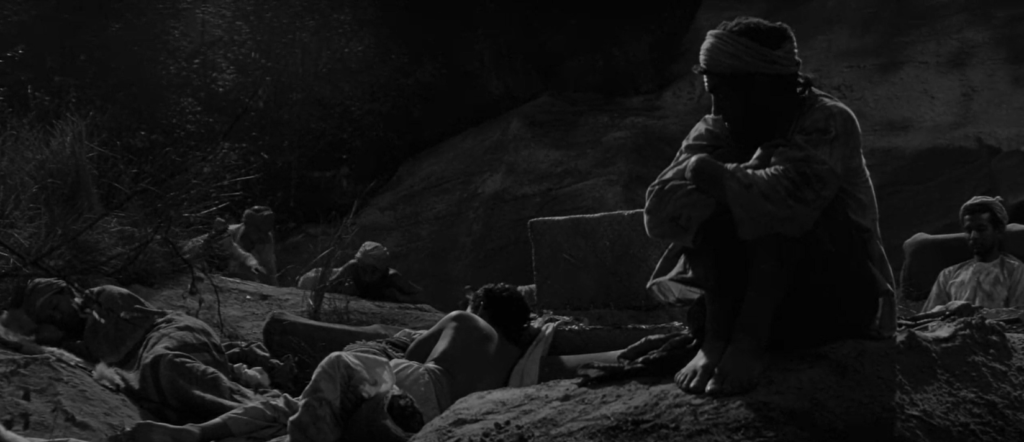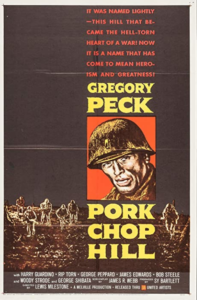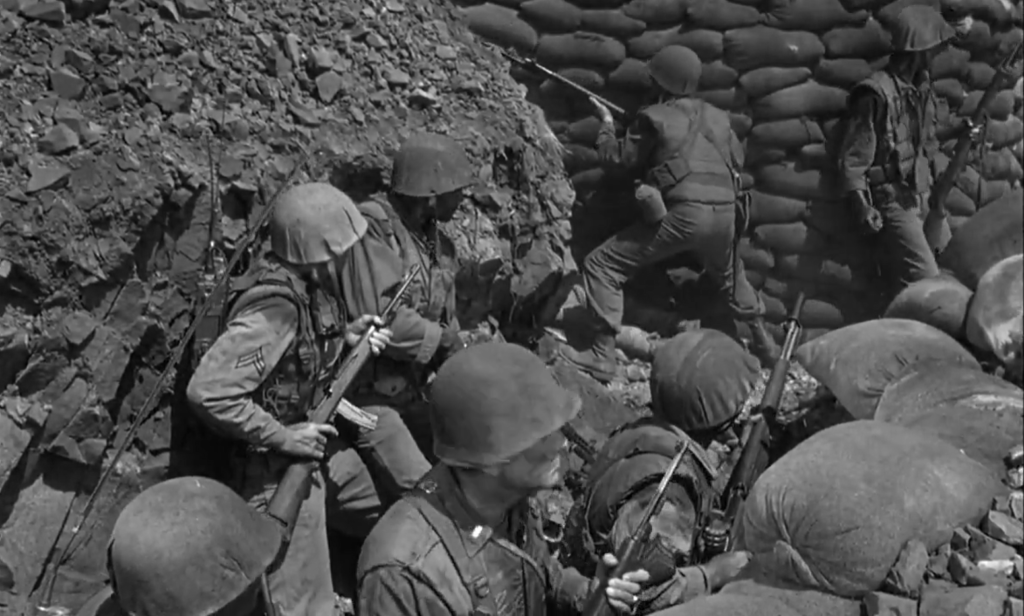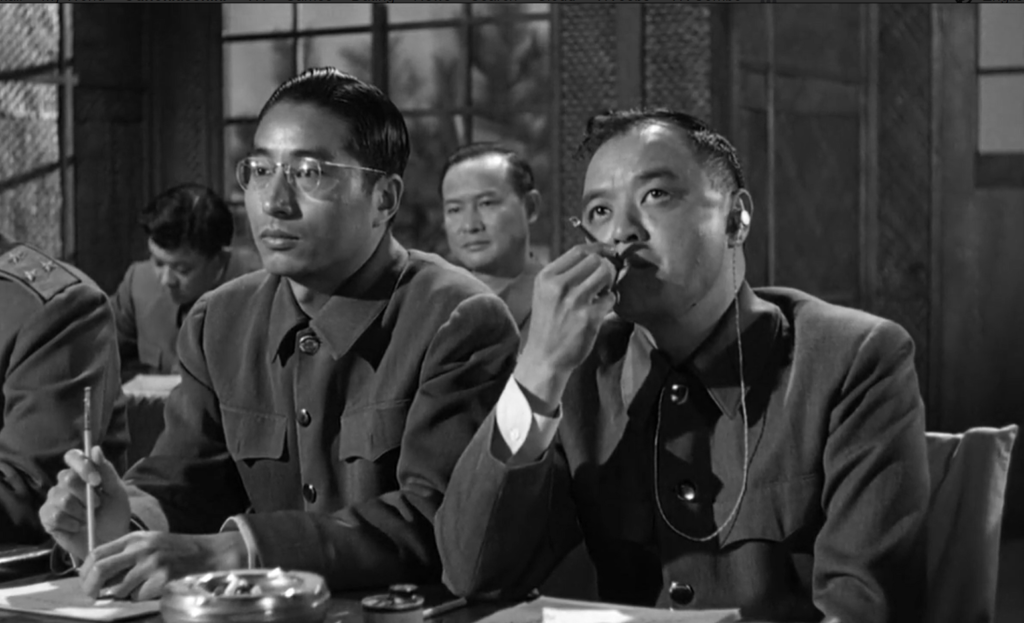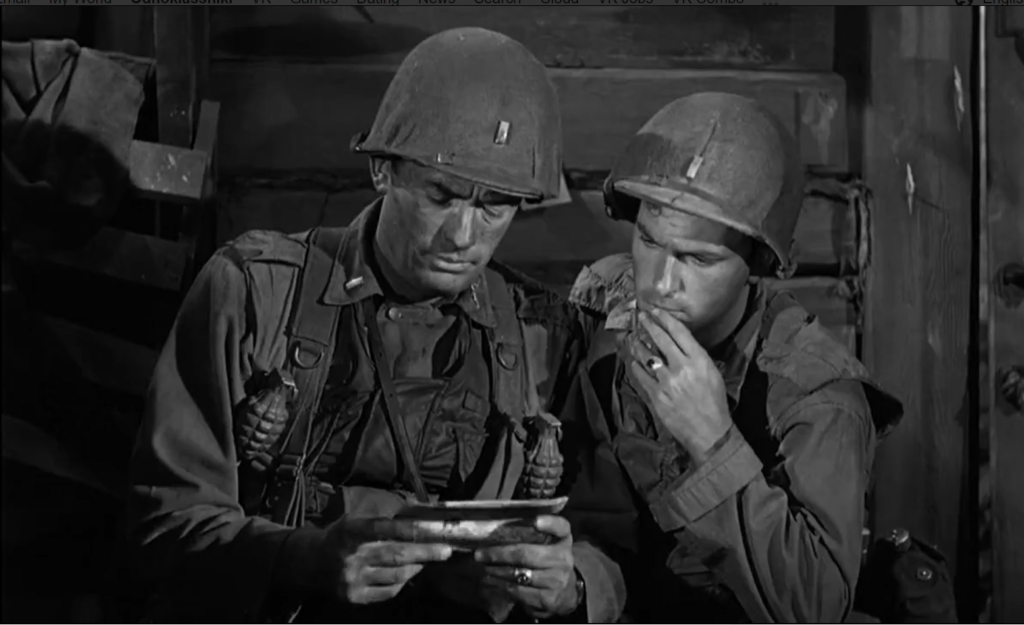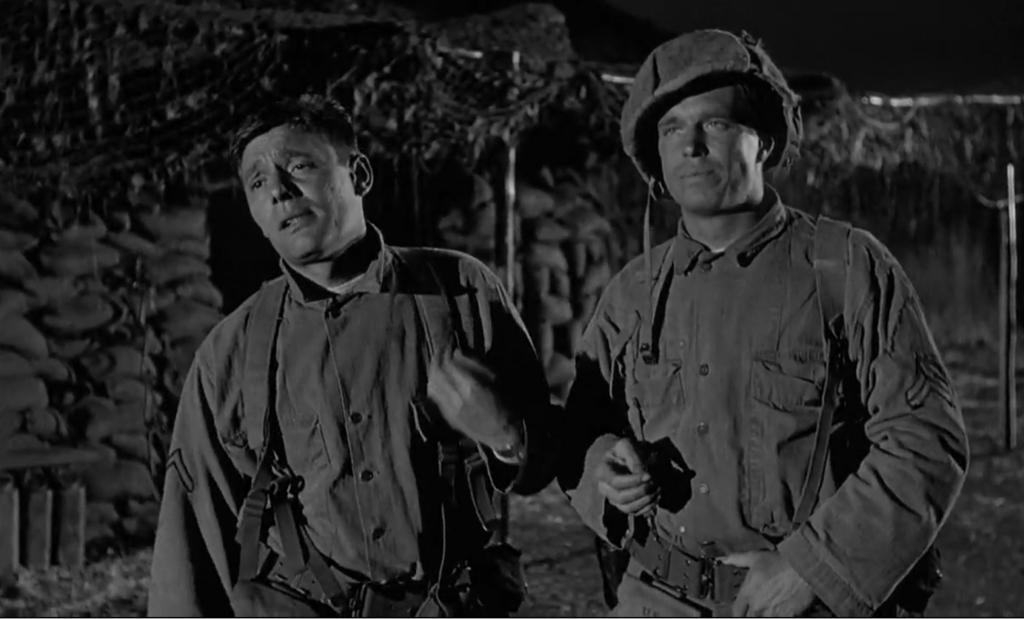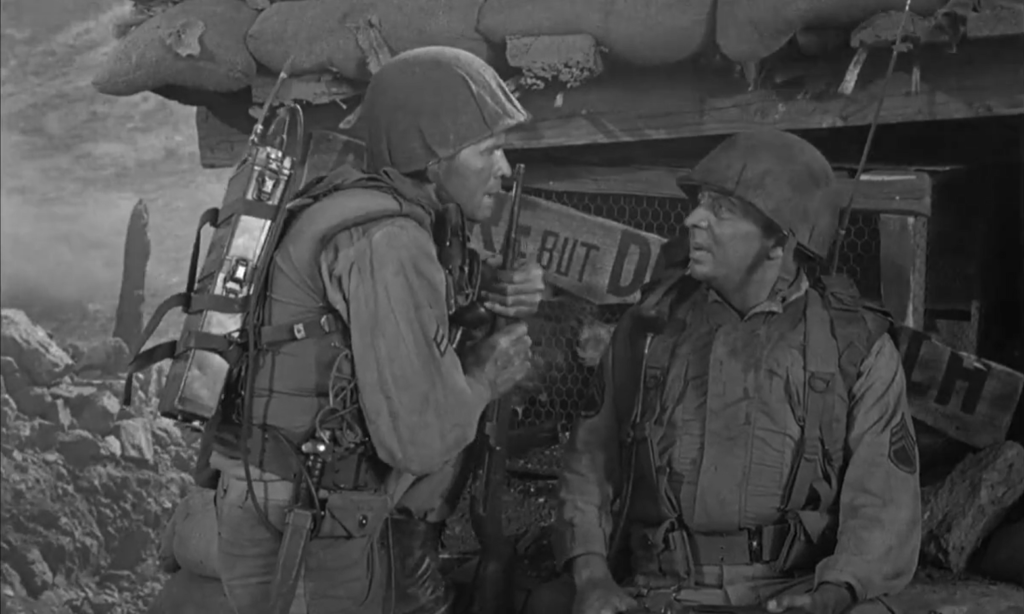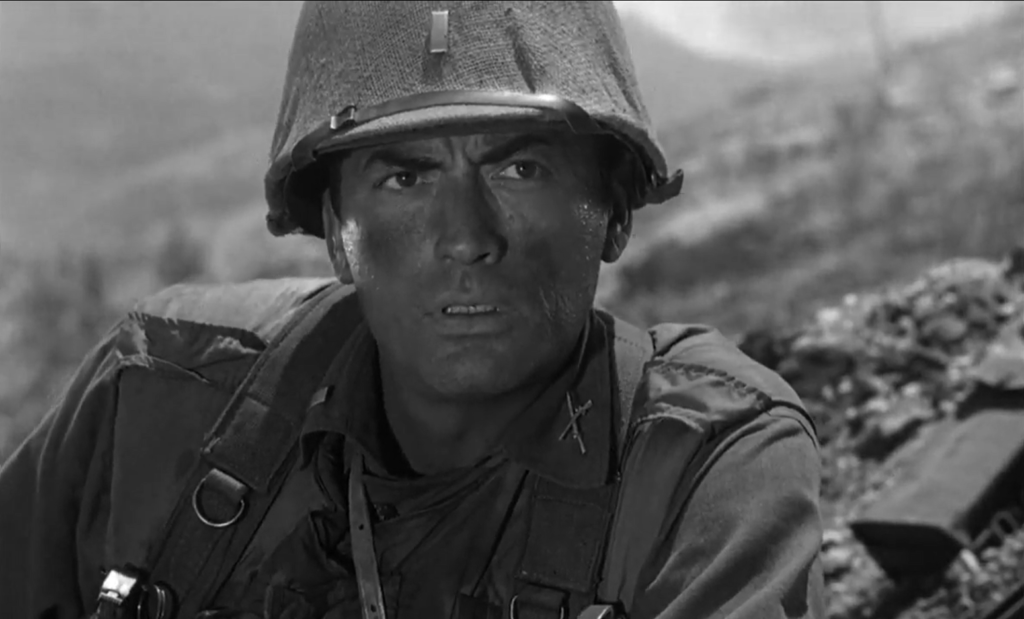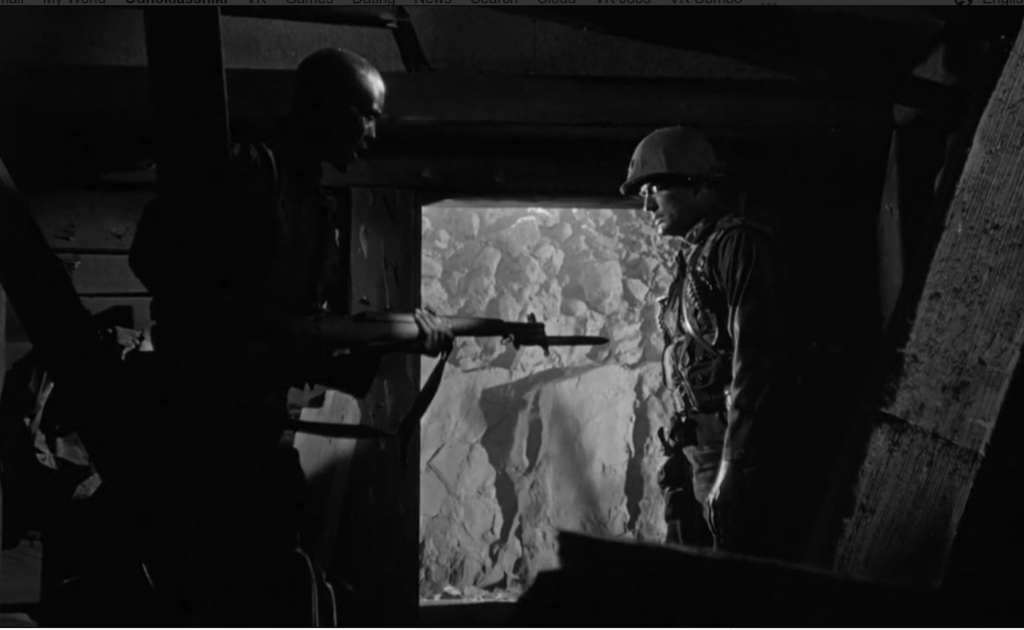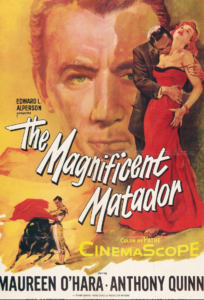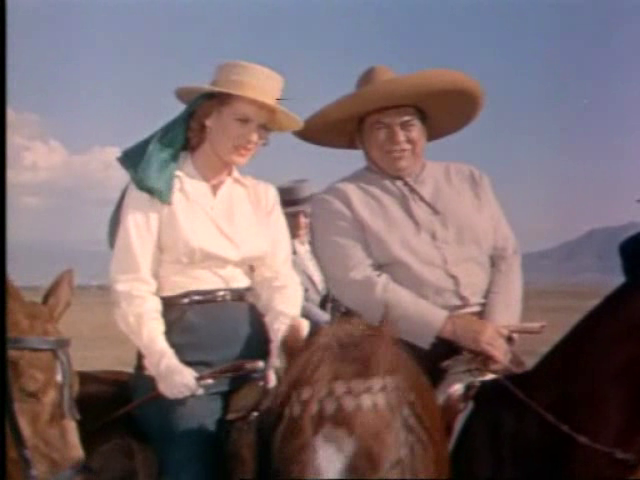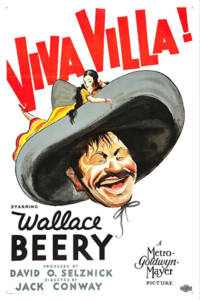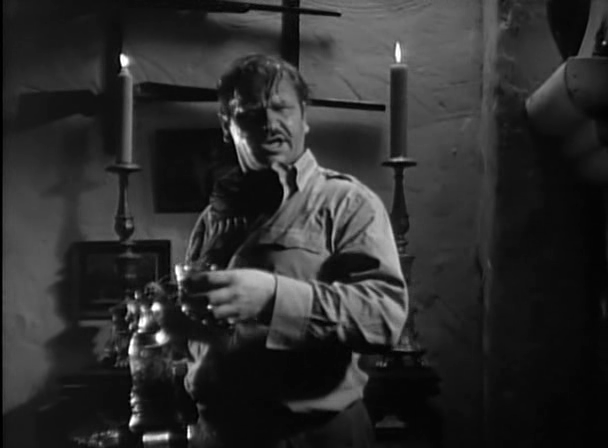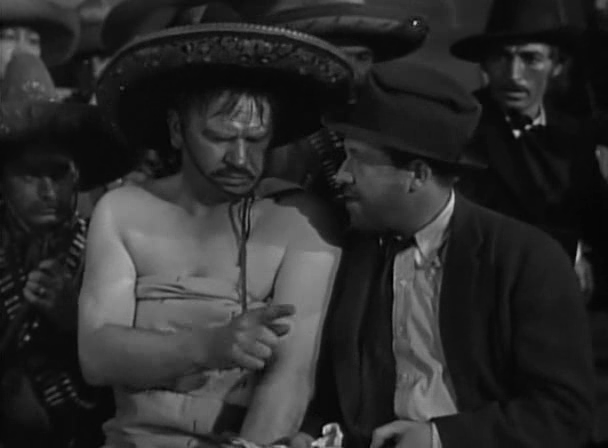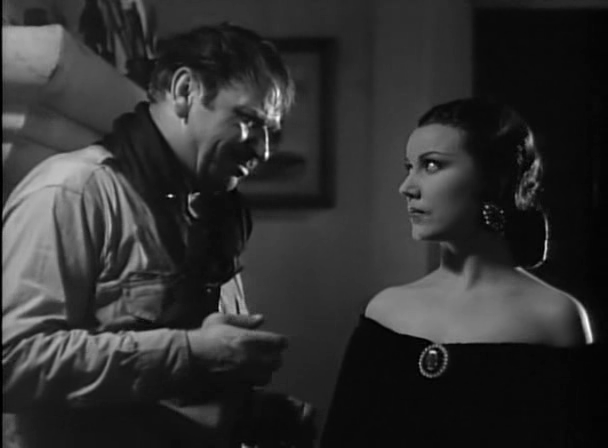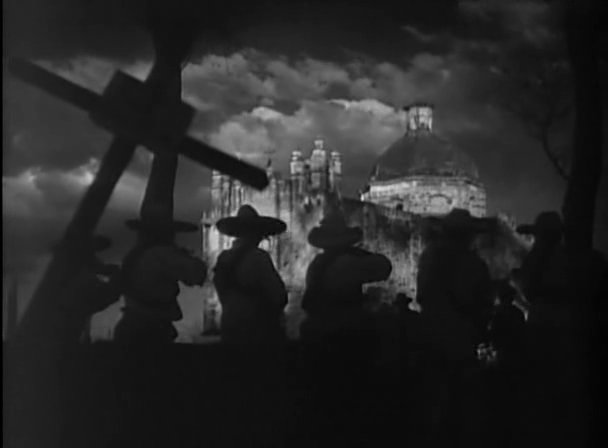|
Genres, Themes, Actors, and Directors:
- Biblical Stories
- Christianity
- Deborah Kerr Films
- Historical Drama
- Leo Genn Films
- Mervyn LeRoy Films
- Peter Ustinov Films
- Robert Taylor Films
- Ruthless Leaders
Review:
This top-grossing film of 1951 was produced by MGM Studios but filmed in Italy by director Mervyn LeRoy, with tens of thousands of extras overseen by a para-military style crew. The result is an historical epic truly impressive in its scope for the time:

… but bogged down by an unrealistic (would-be) romance between luminous Kerr and wooden Taylor, who made a career comeback with this film but isn’t particularly compelling:
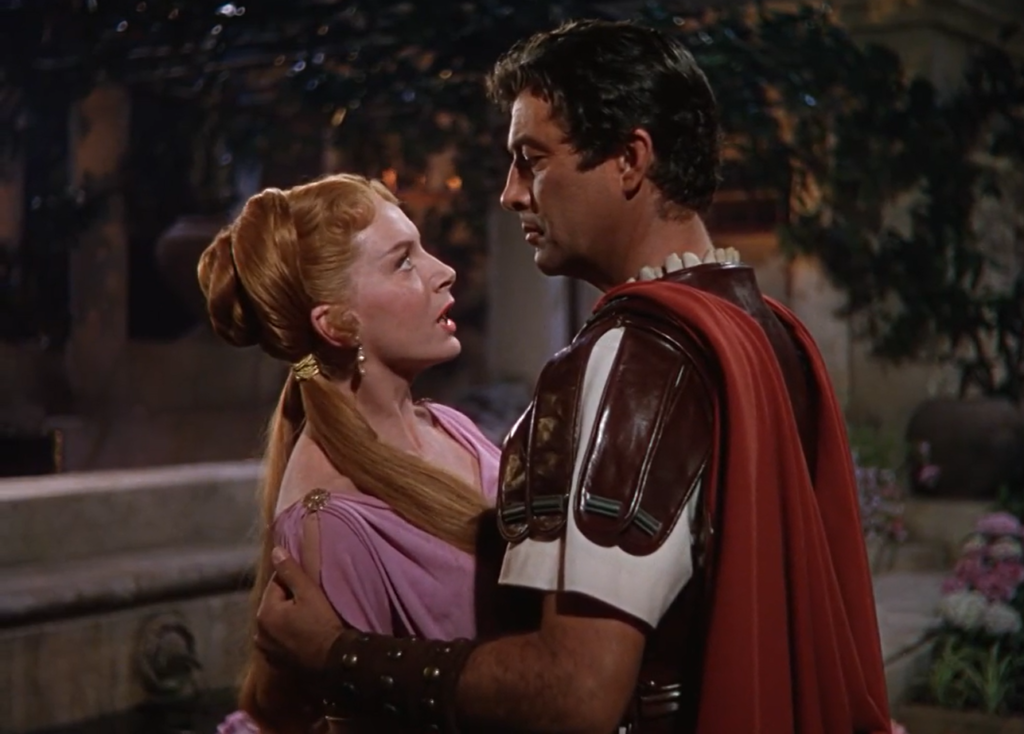
Ustinov, on the other hand, holds nothing back in his performance as infantile Nero, who believes every word of flattery spoken to him by his advisor, Petronius, and is authentically convinced the world is lucky to be graced by his presence:

Oscar-nominated Genn is perfectly cast as Petronius, whose contempt for Nero is thinly yet effectively veiled. However, I’m not sure why a random subplot about a slave (Marina Berti) throwing herself at Genn is included in this overly lengthy (nearly three-hour) movie, other than to showcase yet another beautiful woman in the cast:
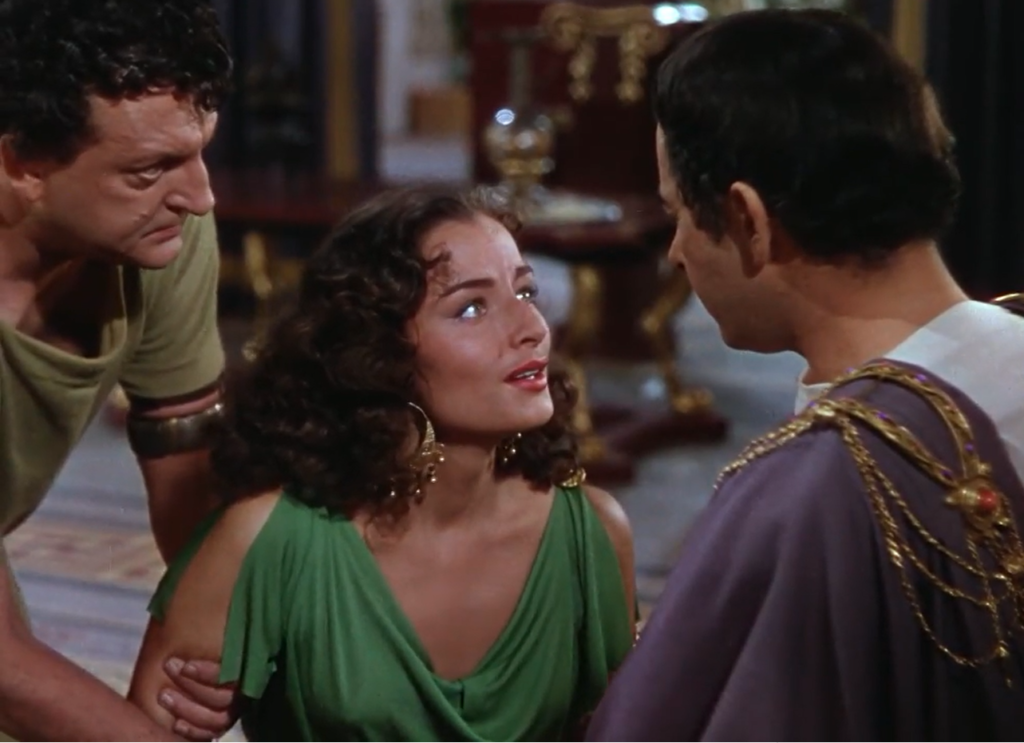
This is also likely the reason for one of Nero’s spurned lovers (Rosalie Crutchley) showing up every now and then:
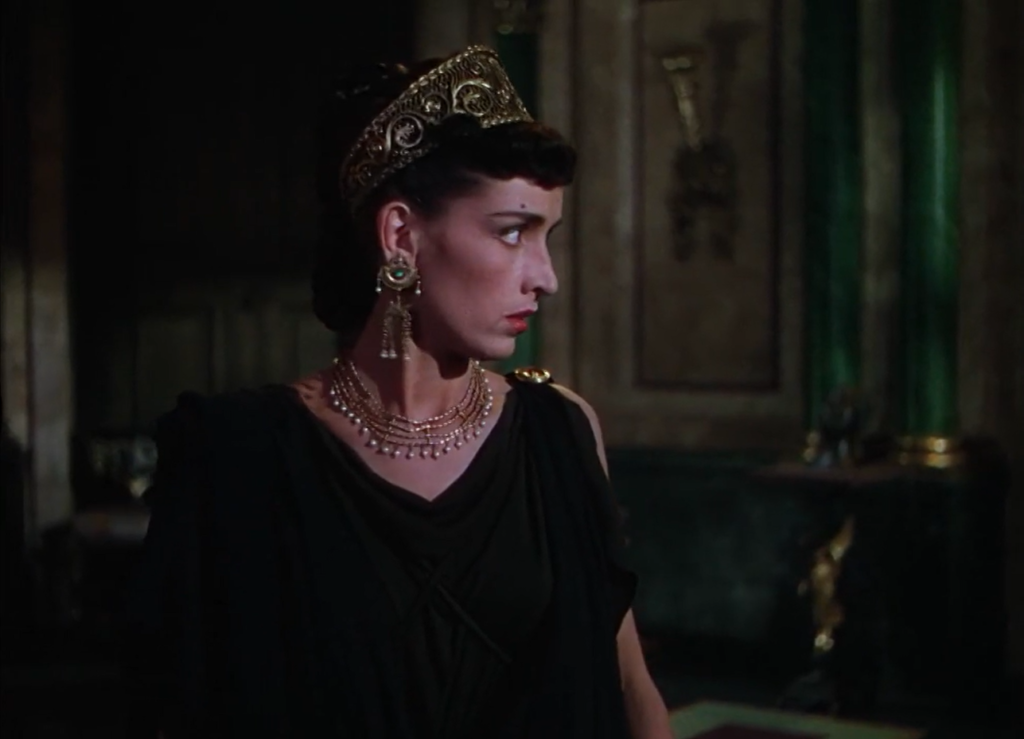
… though at least her character (freedwoman Claudia Acte) was a real-life figure and a significant influence in Nero’s life. Meanwhile, Laffan has great fun playing Nero’s lascivious wife Poppaea, who lusts after Taylor and seeks vengeance when he rejects her:
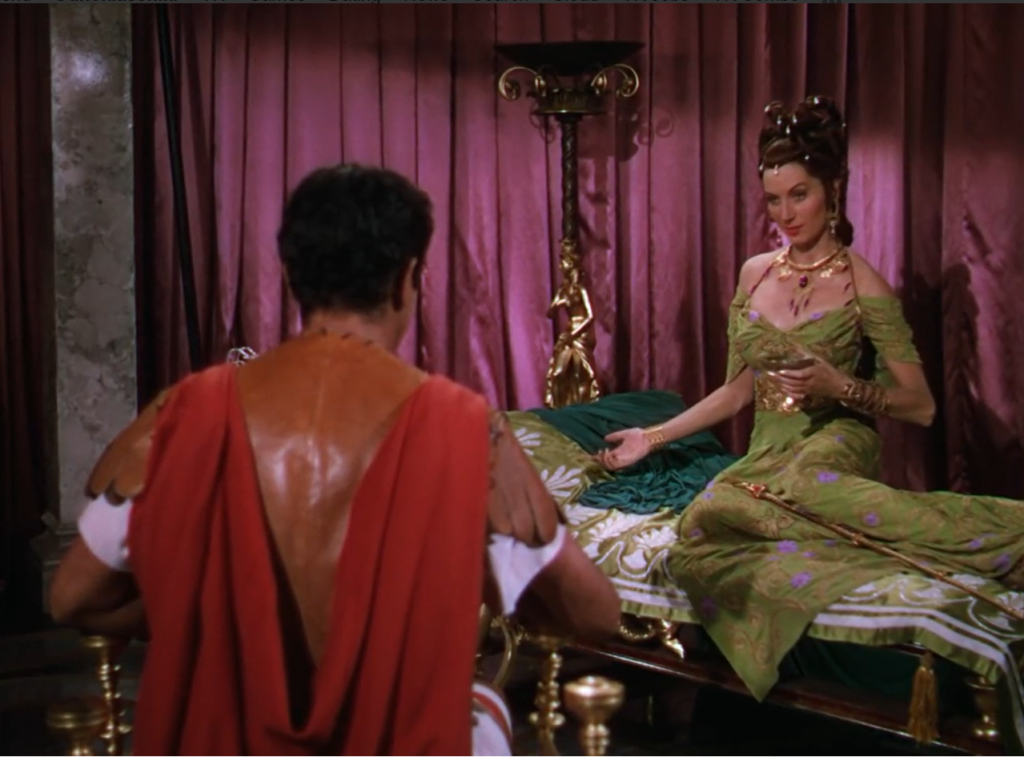
Kerr is gorgeous, but not given much depth in a role that simply requires her to be a devoted Christian and (eventually) a willing partner to Taylor:
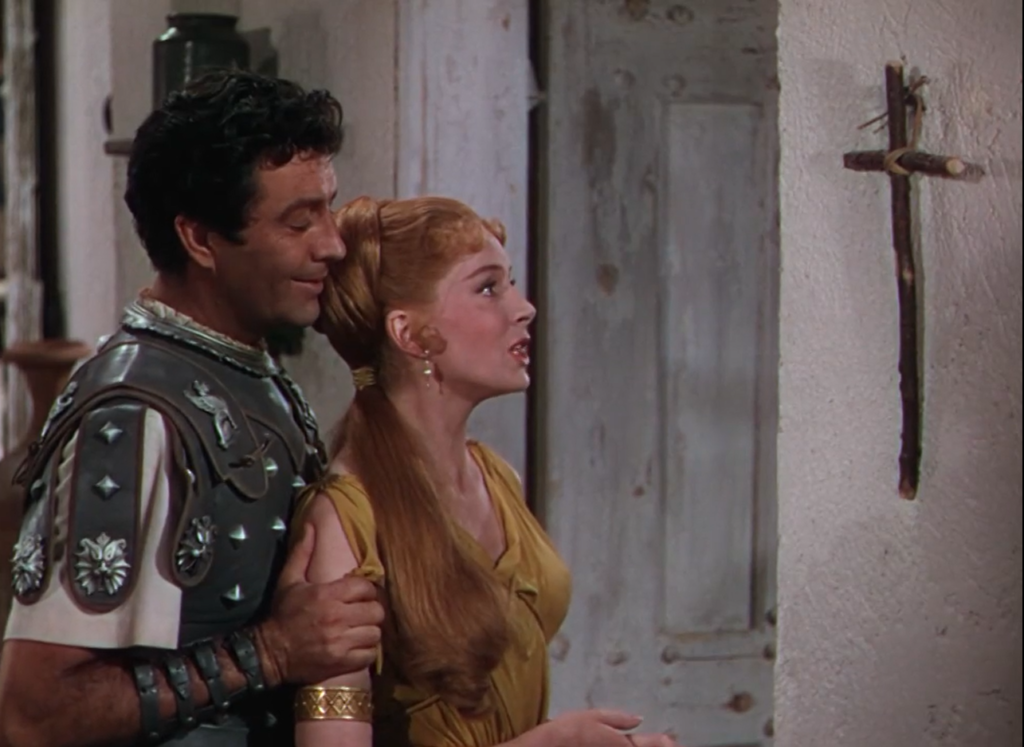
The most impressive sequence is the burning of Rome, which according to TCM required months of construction to build and 24 evenings to burn down.
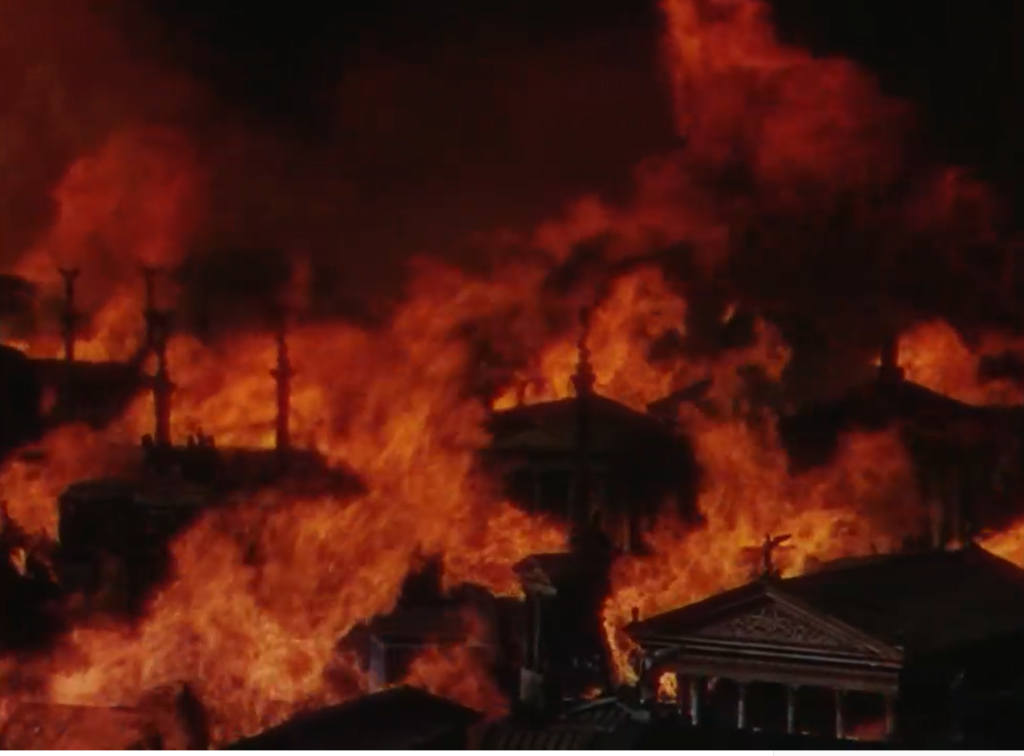
The most controversial scenes, however — earning the film an X certificate in Britain — were those of lions tearing into Christians to provide a spectacle for Nero’s masses:

Speaking of Nero and his masses, Ustinov is given a number of chilling lines to recite. In addition to justifying the burning of Rome simply to foster his creative “genius”, he ignores Petronius’s warnings and decides to blame the Christians for his misdeeds:
Petronius: (to Nero) Condemn these Christians and you make martyrs of them, and insure their immortality. Condemn them, and in the eyes of history, you’ll condemn yourself.
Nero: When I have finished with these Christians, Petronius, history will not be sure that they ever existed.
Yikes.
While Quo Vadis isn’t must-see viewing for all film fanatics, it’s worth a look both for the impressive spectacle it puts forth, and for Ustinov’s portrayal as one of history’s most powerful sociopaths.
Notable Performances, Qualities, and Moments:
- Peter Ustinov as Nero
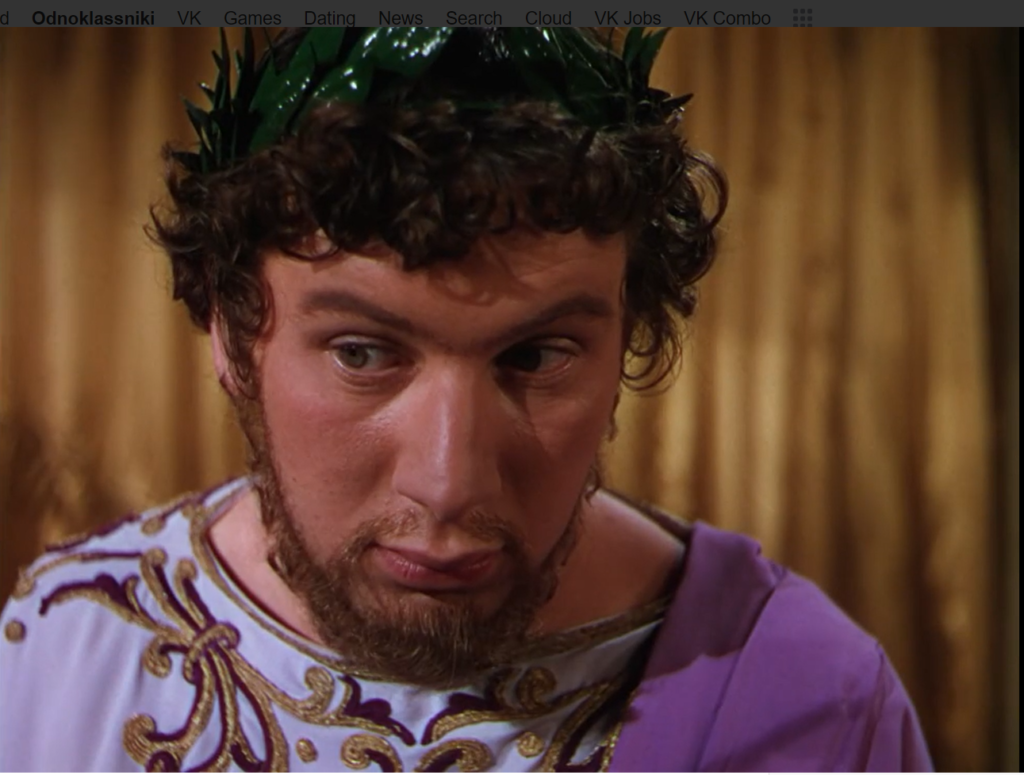
- Leo Genn as Petronius

- Patricia Laffan as Poppaea
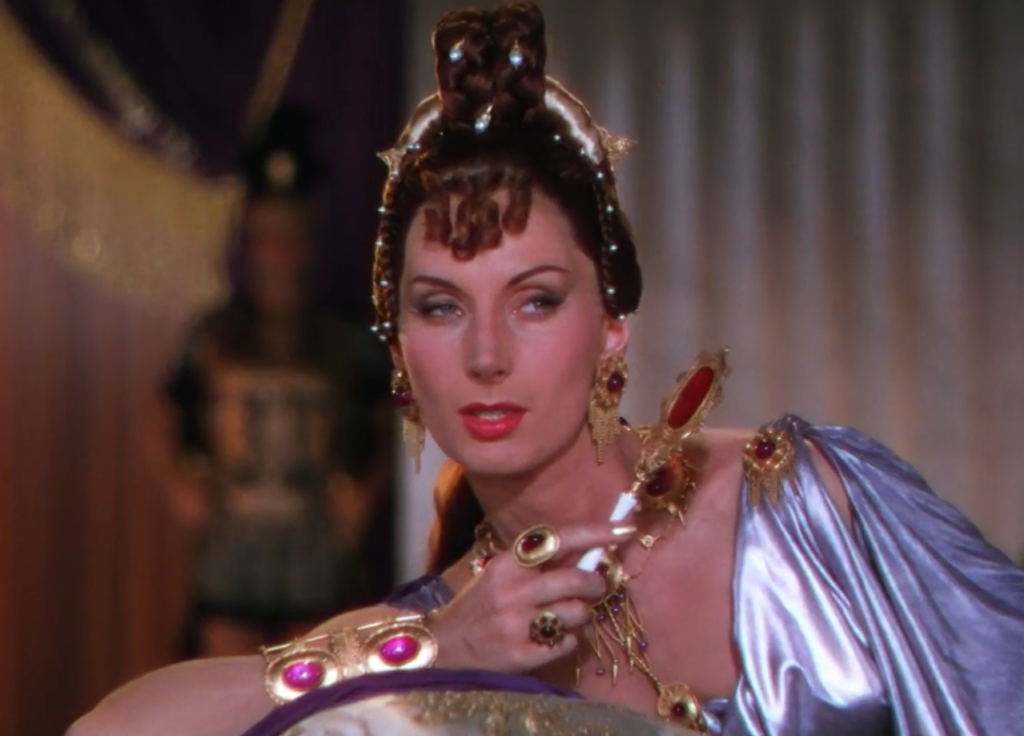
- Gorgeous Technicolor cinematography
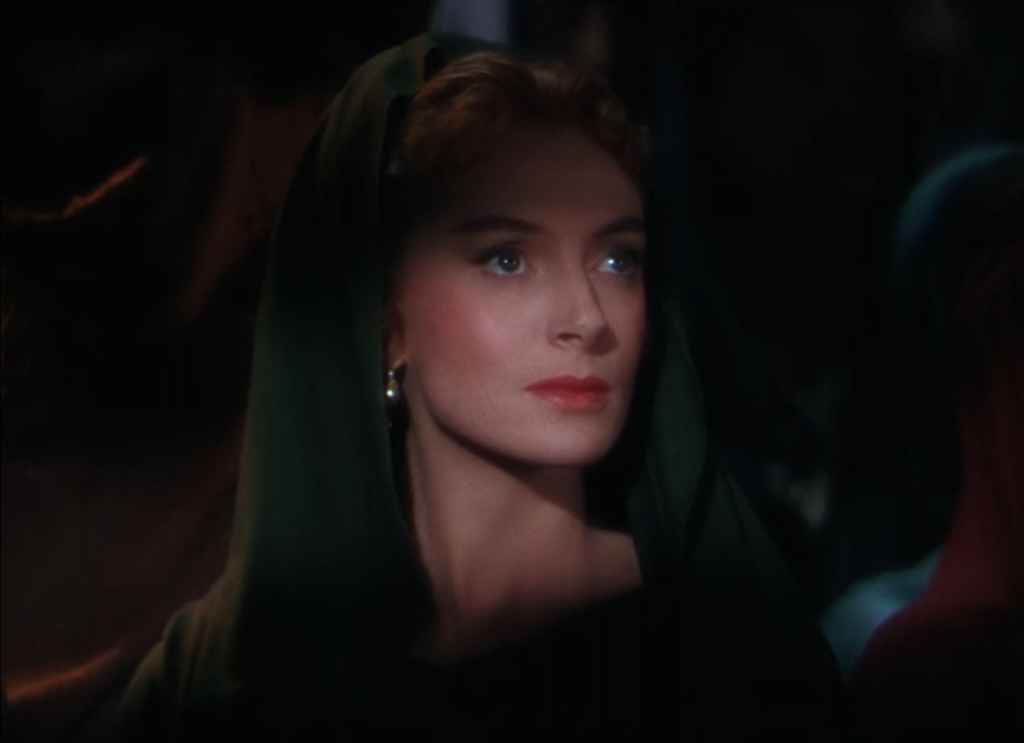
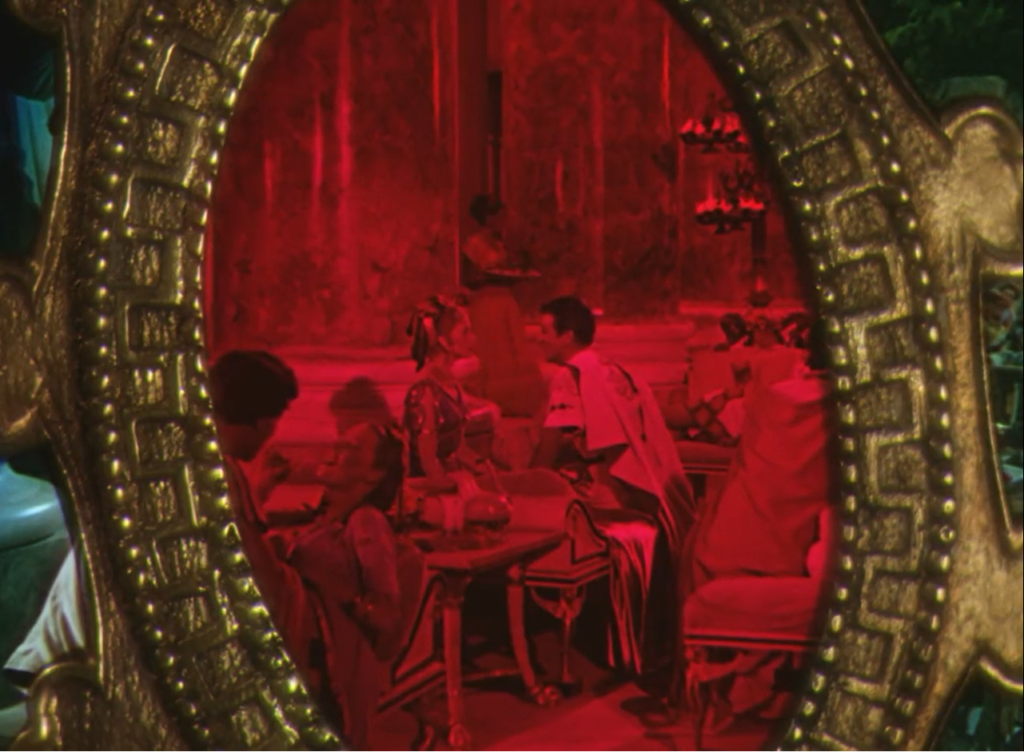
- The remarkable burning-of-Rome sequence (purportedly filmed by the movie’s original director, Anthony Mann)
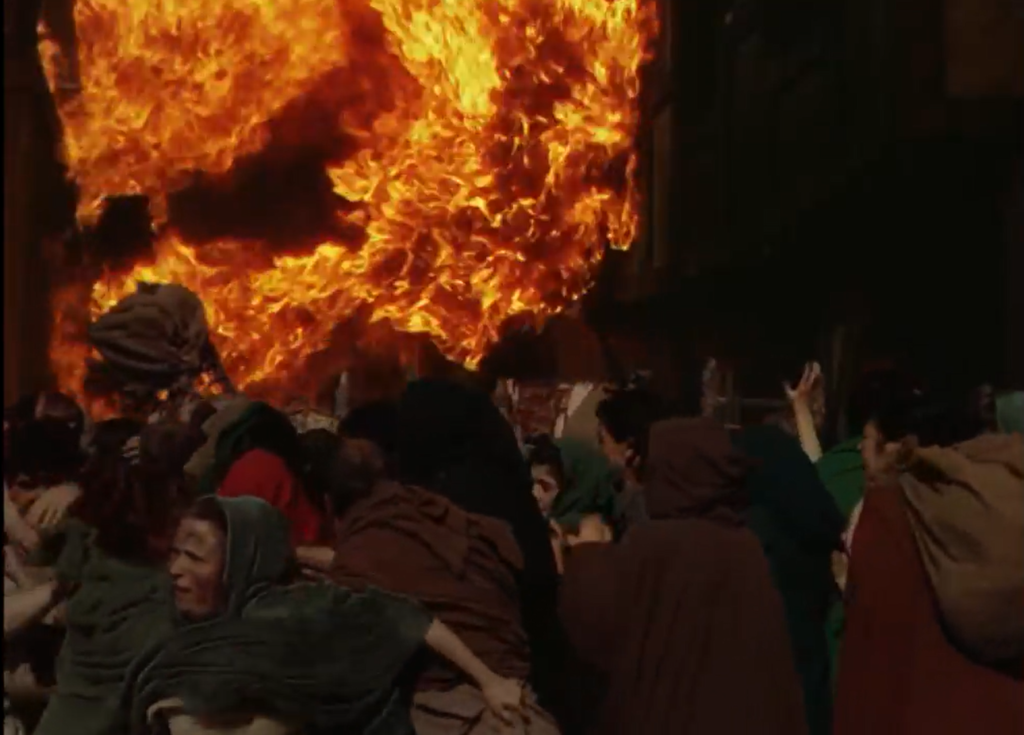
Must See?
No, though it’s certainly worth a look.
Links:
|
